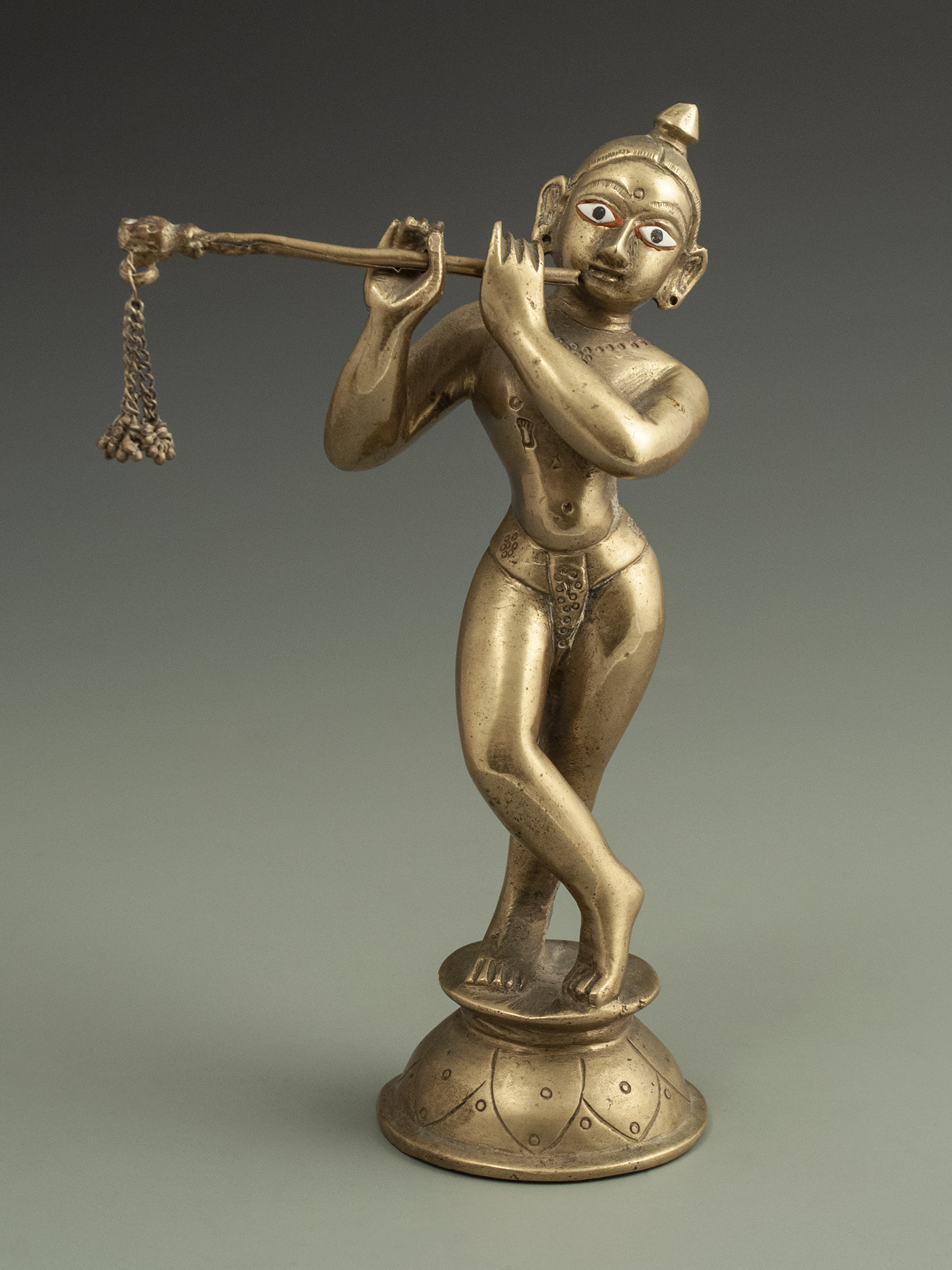Krishna Statue
India, 1985

During my visit to India in 1985, Varanasi was a City of Liars: an opaque metaphor, like something out of Calvino’s Invisible Cities. I was lied to about everything: my fare from the train station, the price of my lunch, the cost of a handkerchief.
As he rowed me onto the Ganges at dusk, my boatman announced that he would overturn our flimsy vessel—dumping me and my camera into the corpse-laden river—if I didn’t double his already exorbitant fee. To underscore his threat he pulled in the oars, and began rocking the vessel violently from side to side.
I told him that I didn’t have the money on me, that I never carried that much cash at one time. But my hotel was right by the riverside. He could come to my room to collect it if he returned me safely to shore.
Gamely he rowed me back. The instant the keel touched the muddy bank, I leaped from the boat and began running. He followed in pursuit, shouting, chasing me down the street with a stout oar ready in his hands.
I lost him in the Night Market, a maze of bulb-lit stalls packed with cotton sellers and goldsmiths, mangos and chess sets, woven silk brocades snapping open like iridescent fireworks. I rounded a bend and ducked into a shop selling small devotional statues. Here was something new: The shiny brass gods and goddesses came with accessories, like G.I. Joe. You could buy a crown for Ganesha, a skirt for Kali, a bow for noble Laxman.
This Krishna caught my eye: lover, prankster, and slayer of river demons. I paid a fair price for the figure, and almost as much for his flute—which, despite the merchant’s assurance, is not really gold.
